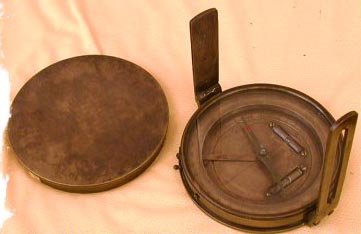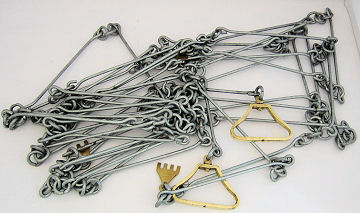An 18th Century Surveying Expedition
To be held in
Charlestown, NH
Historically known as Township #4
December 16 & 17, 2006
Some background info on 18th century surveying


Come join us for a weekend of period surveying and mapmaking.
Participants must provide their own sleeping and eating gear.
Please pack your gear so that you can carry it all in to the camping site and back out. This is an opportunity to learn to travel light.
We will be setting up a lean-to base camp. If you have a fly or other small piece of tentage that you want to pack in, feel free to do so.
We will be eating period trail food, please plan accordingly.
Warm clothing is recomended, it is December, after all, and it can get cold at night.
Some of the area we will be surveying is overgrown with wild raspberry canes and it is a good idea to come equipped with leggings to to protect your legs and stockings.
The focus of the weekend is not shooting (for a change!), but it wouldn't hurt to have a musket or two in the party to defend against savages or wild beasts.
We will be providing a Gunter chain, a reasonably early styled surveyor's compass, a few axes and hatchets. It might be a good idea to bring a notepad and writing implements to take notes.
The boundary we will be surveying and marking will be approximately 1/2 mile, which encloses a 7-acre parcel of wooded land. Some terrain is reasonably flat, some rocky, and one spot may even be boggy. Dress accordingly.
For more details, contact Pete at: info@middlesexvillagetrading.com